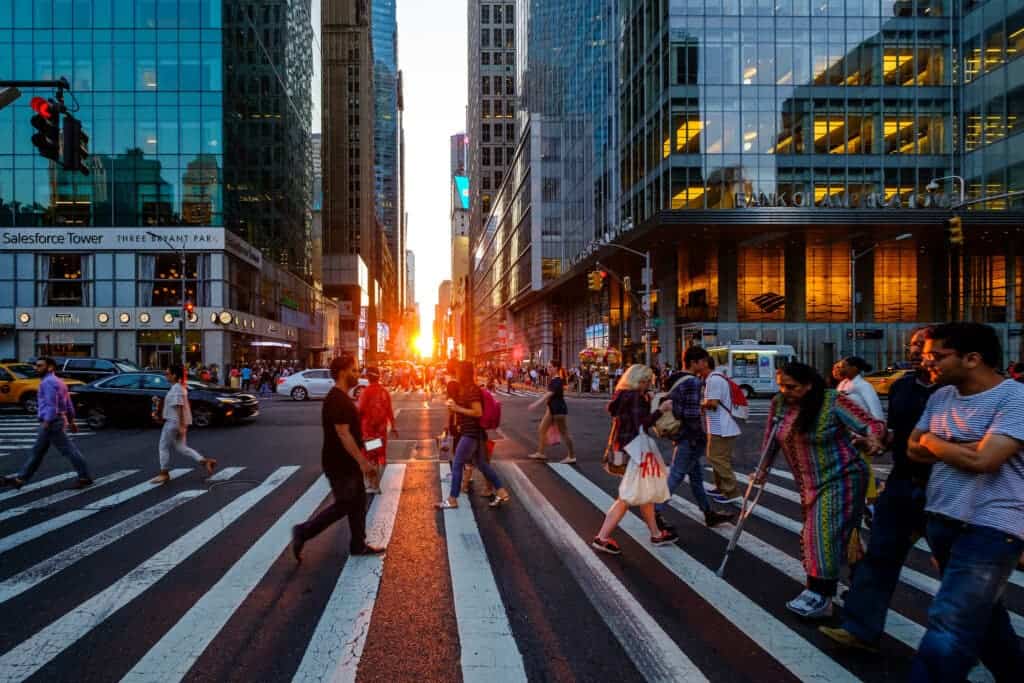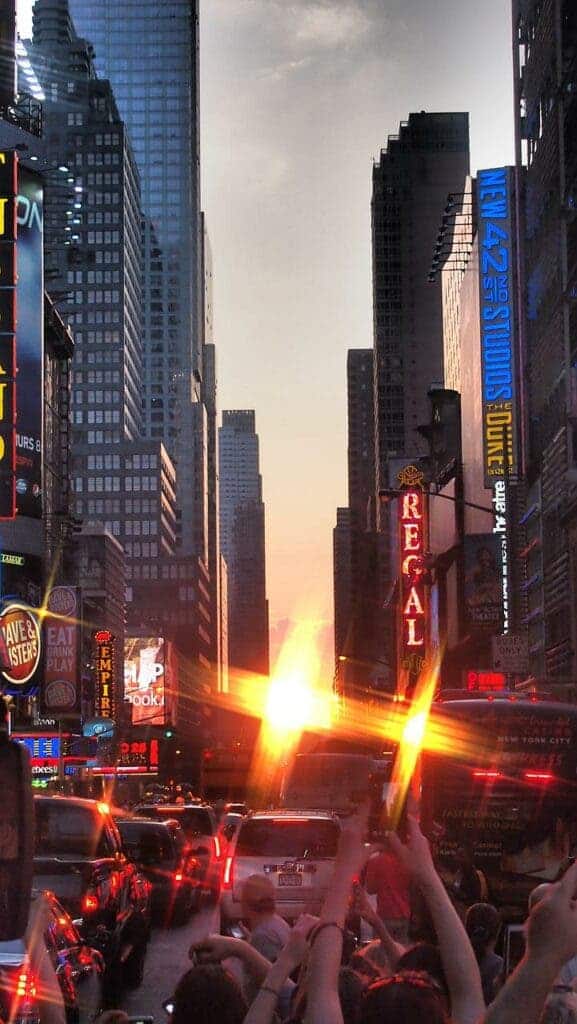Unnoticed by many, an unusual phenomenon happens four days a year. Twice a year (for two days in May and two days in July), the sun sets (or rises) along the exact alignment of the Manhattan street grid in New York City. Yesterday, on the 29th of May, half of the setting sun’s disk was visible on the street grid at 8:13 pm ET. Today, on Monday, May 30, the full disk of the sun will be visible on the grid at 8:12 p.m. ET. Here’s what you need to know.

Unlike most cities, New York (and several other North American cities) have a lot of perpendicular streets. In accordance with the Commissioners’ Plan of 1811, the street grid for Manhattan (or most of it) follows an approximate east-west line — technically, it’s 29° clockwise from true east-west.
This means that on days when the sun aligns perfectly with this direction (generally sunsets and sunrises align on dates evenly spaced around the summer solstice and winter solstice), watchers are in for a spectacle — weather allowing, of course: the sun will seemingly set exactly on the street.
If the streets on the grid were exactly north-south and east-west, then both sunrise and sunset would be aligned on the days of the equinoxes (which occur around March 20 and September 23 respectively).
The name was coined by Neil deGrasse Tyson in 1997, alluding to the famous Stonehenge monument, which also marked the summer and winter solstices for thousands of years. In recent years, the phenomenon has become more and more popular, drawing both locals and tourists.
This year, in addition to the two dates in May, Manhattanhenge will also fall on July 11 and 12 when the full sun and half sun will be seen on the grid at 8:20 p.m. and 8:21 p.m. respectively.

In addition to the days themselves, in between May 29 and July 12, those in New York will be able to witness the “Manhattanhenge Effect,” where the sun will appear between the grid of the city low in the sky, but not quite setting.
Of course, Manhattan isn’t the only place where this happens. Several cities have particular alignments that favor this type of phenomenon. For instance, Chicago has similar events on March 20 and September 25, Baltimore has it on March 25 and September 18, and Toronto has it on February 16 and October 25 (depending on the angle of the alignment of the streets).
If you are in NYC, the best areas to witness Manhattanhenge are along wide and clear cross streets, including:
- 14th Street
- 23rd Street
- 34th Street
- 42nd Street
The Tudor’s City Overpass and Hunter’s Point South Park in Long Island City also offer excellent vantage points.
The best approach is to head somewhere towards the east side of these streets, so you can have a longer view towards the west.






